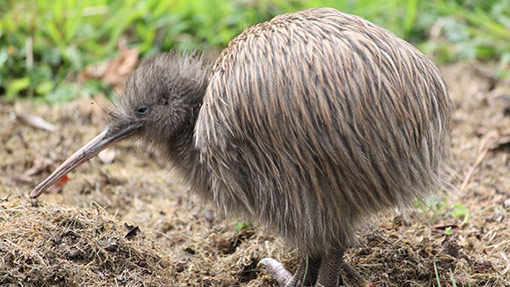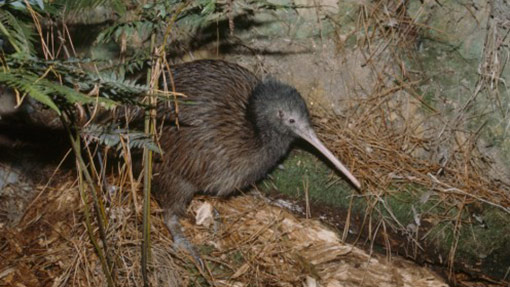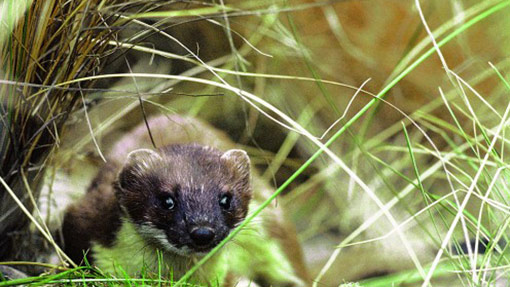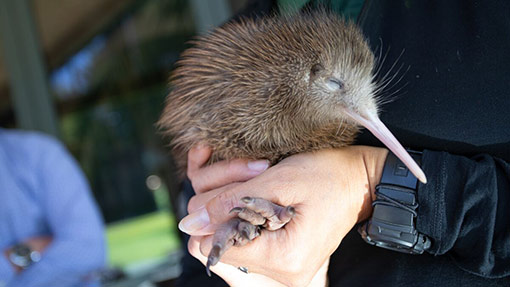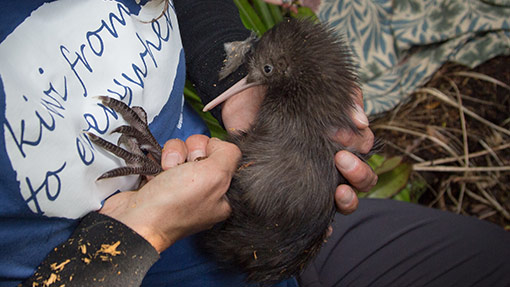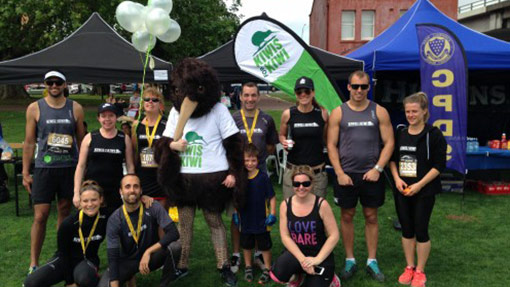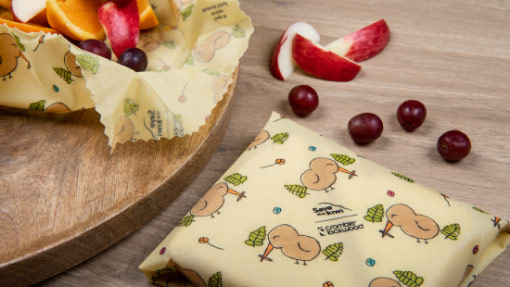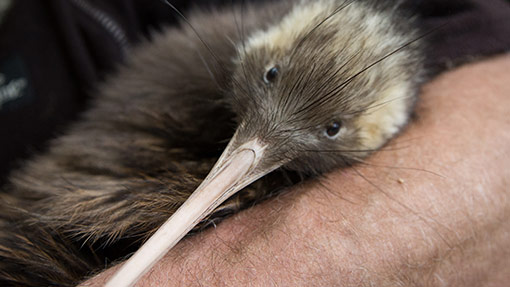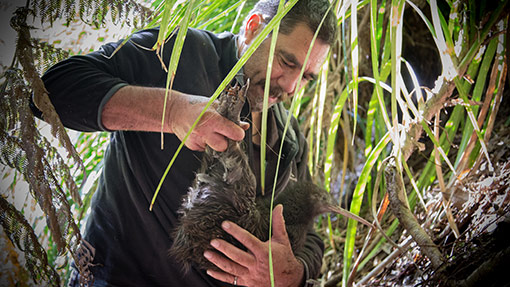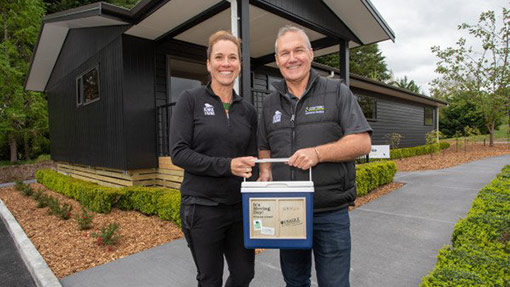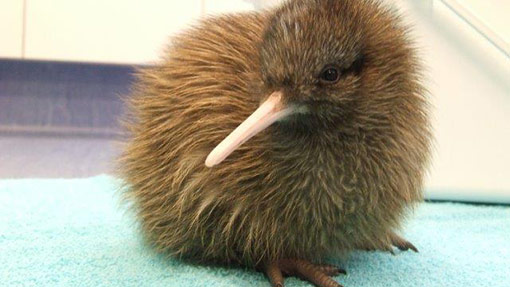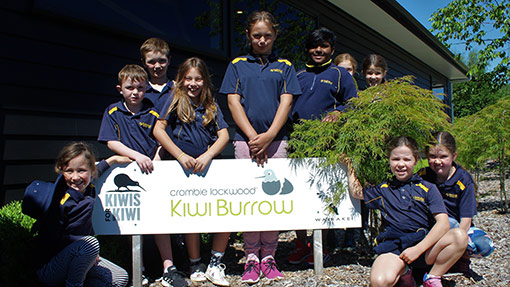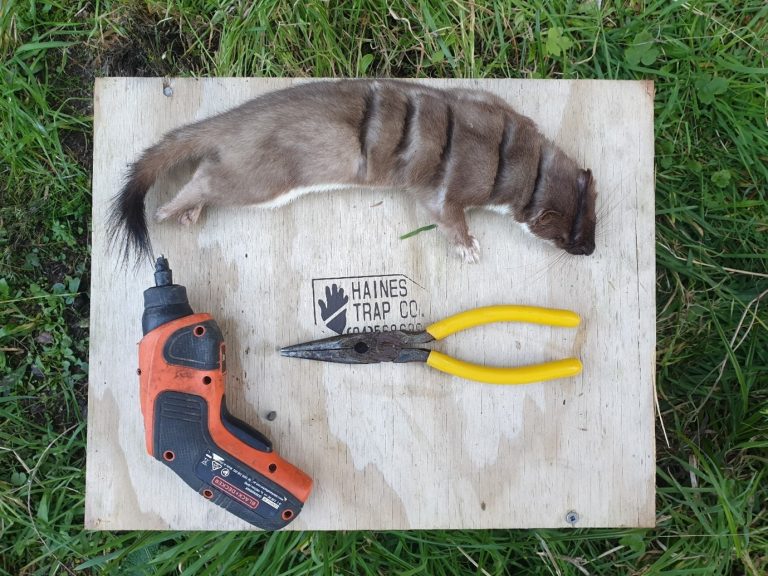Autumn can be an interesting time. The weather is cooling and there is a bit of a ‘get ready for winter’ feel in the air. It is no different in the ngahere.
This month I want to talk a bit about stoats. As we all know, stoats are our public enemy number one when it comes to young kiwi and their survival rates. Everywhere I go and everything I read, people talk about the peak stoat catch time being December/January. That can definitely be the case and this year was no different.
For myself, I had a fairly quiet December, but January went off like a bomb, with a sudden rise in stoat catches and sightings. What was interesting was that the catches were not just young dispersers. This summer I also caught a lot of bigger stoats and males in particular.
These animals were not in my trapping zones prior, as my cameras told me so. In January, they suddenly turned up on camera and in the traps. February stayed quite busy, but March dropped back a bit. This is pretty standard for where I trap.
What I want to talk about here, though, is what I call the second wave. And that is April (autumn). Over the years I have noticed that sometimes the most stoats I catch are not in summer but are in fact in autumn. I have noticed a peak in captures that can start in late March and run through until May, when things quieten right down again. April is the peak of that. Why is that?
Well, to be frank, I am a little unsure, but my theory is that the animals are working to put on body condition going into winter and as such become more trappable as they feed up. This is only a theory, but I see it in many other species and think that perhaps it is no different for mustelids and stoats in particular.
I often hear trappers ask, “Where do all the stoats go in winter?” I can only say that they don’t hibernate, and they will still be there. They just don’t go in to traps as readily. My other thinking is that going into winter you have caught the animals that dispersed into your control zone that were going to go into a trap. What is left are the ones who don’t or won’t interact as readily with your chosen control method.
And this is the thing, folks. Just because you aren’t catching doesn’t mean you have got them all. A sad but simple truth.
One of my wee sayings is that you should never ‘trap and hope’. You should ‘trap and test and know’! Take pleasure in the challenge of looking for the remaining individuals and targeting them. Be the trapper who traps the untrappable. If you want job satisfaction as a trapper, then that is it for you right there. Remember that these animals are not all created equal or the same, and to treat them like that is to underestimate them and the challenge that they are.
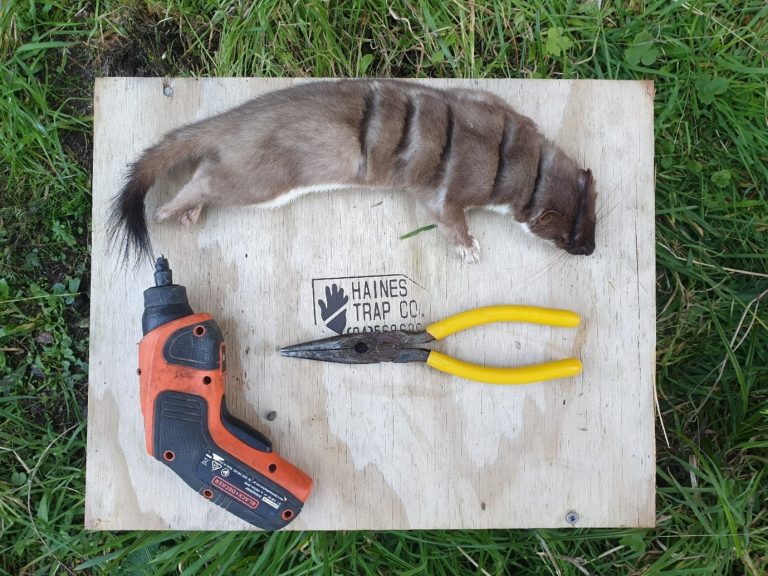
A very big male stoat caught in late May. It’s lying on a DOC250 box!
So, because we all think deeply about what we do on the trap line and we make sure we are making the most of seasonal peaks and increases in trapability, we won’t be simply doing the same old same old and hoping that we get a spike. Will we? No, we will not! We will take what we know of our area and the seasonal variations that help us a bit and we will add value where we can.
So, what can we do to help our potential autumn stoat spike be the best it can be? Well, aside from making sure our traps are maximised in every way, the best way to add value at this time of year is in our bait and lures.
Something I see a lot around the country is the same baits and lures being rolled out month by month, year by year. There is no doubt that they will work to a point, but we need to remember why we are baiting our traps. We need to stop thinking of the bait as purely a food source, and also see it as something that encourages the animal to interact with the trap. There is a difference. So, when you change the scent in your trap you are potentially going to catch the animal’s attention and encourage it to check the trap out. That animal may have been going past the same trap daily for months, until one day it goes, “Hello, something’s different here. I’d better investigate”. Predators are both cautious and curious.

Whole egg, egg yolk, blood scent and big chunk of venison … the Backblocks smorgasbord approach. Looks pretty attractive if you are a mustelid. You would at least want to check it out. This trap got a big ferret the next day.
Many projects use dried rabbit, so the first thing I advocate in that situation is that they change the bait as a pulse. So, what with? BLOOD SCENT! Recreate natural and give them something that floats on the breeze and through traps well. I do use actual blood but what I am talking about here is big chunks of fresh meat that are dripping blood. Get away from the wee sanitised bits and put in a decent hunk that screams something died recently and “EAT ME”!
So, what are my favourites? Venison chunks work really well, as does beef trim if you want to depart from the usual. Whenever I use venison, I get a spike in stoat captures. They seem to love it.
Fresh rabbit or hare is also a real winner. Big rabbit chunks with skin and fur and blood are best.
The other thing I like to add to traps at this time of year in particular is fat. If you are an animal going into winter and trying to put on condition, then fat is high octane tucker. Any fat seems to work well for me, including beef, venison and mutton. Don’t be afraid to use more than one lure. I call that the Backblocks smorgasbord approach.
If you use hens’ eggs as well, then I suggest you prick or crack the egg to release more scent. Studies have shown that this practice can work really well. I suggest that your bait regime should always have meat and the egg is added for visual value, not so much on its own. You want that blood scent. It almost seems to mesmerise them.

Don’t be afraid to think outside the square. Freshly trapped rats make great bait too.
So that is a simple thing you can do to add value but not cost. Remember team: get inside their heads, understand them and think like them, and you will be a more effective predator remover and trapper.
Good hunting, folks.
Regards,
John Bissell
Kiwis for kiwi National Predator Advisor
www.bbem.co.nz
Instagram @nzpredatorhunter


